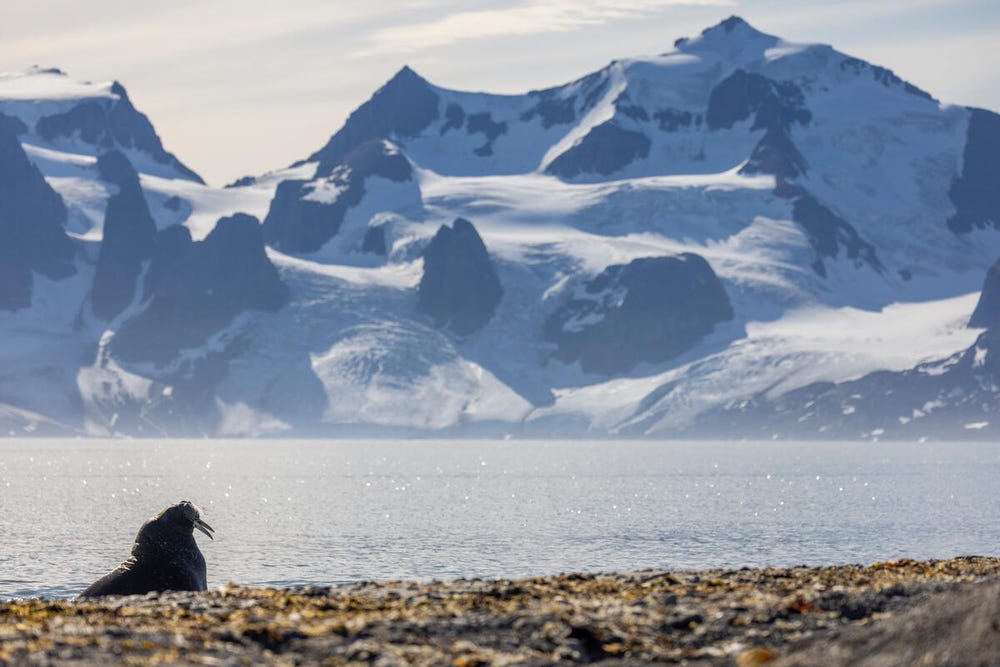Walrus detectives: public asked to count Arctic mammals in satellite images
The citizen science scheme by WWF and British Antarctic Survey aims to help conserve walruses in the face of climate change.

People are being asked to become “walrus detectives” and search for the Arctic creatures in satellite images to help with their conservation.
Walruses, large marine mammals which live around the Arctic, are threatened by climate change, which is warming the region much faster than temperatures are rising globally and changing their habitat rapidly.
To try to help them, conservation charity WWF and the British Antarctic Survey (BAS) are asking the public to take part in their Walrus From Space project.
Thousands of walrus images collected in 2021 by space technology and intelligence company Maxar Technologies have been loaded into the citizen science platform.
Armchair wildlife watchers are being asked to examine the pictures and count walruses to help scientists build up population data on Atlantic and Laptev walruses – those living in Russia’s Laptev Sea.
The five-year project, being run with scientists from around the Arctic, aims to deliver a census using satellite imagery and explore what might happen to walruses in the context of rapid climate change.
The large, social animals, which collect in groups known as herds, huddles or haul-outs, need large areas of shallow water, with lots of shellfish to eat, and nearby spots to rest.
The counting phase of the Walrus From Space scheme is open from January 17 to February 7.
It comes after WWF and BAS science teams visited beaches where the marine mammals rest, in Svalbard in the Norwegian Arctic, to calibrate and validate satellite imagery counts of walruses on the ground.
They also saw how real the threat of climate change is for walruses in the region, which is warming faster than elsewhere in the Arctic and may be warming five to seven times faster than the global average, they said.
Rod Downie, chief polar adviser for WWF UK, said: “Walrus are big, powerful animals but they are also increasingly vulnerable to the implications of the climate crisis as the sea ice is literally melting out from underneath them.
“What we are trying to do – with the help of members of the public – is better understand walrus, how they are being affected by the climate crisis now and how they might respond in a climate altered future.
“We are doing this to provide evidence to support the conservation of the species across its range.”
Hannah Cubaynes, BAS conservation scientist, said: “The Arctic is a vast and remote region, making it a difficult place for scientists to work, and we know that walrus can be very easily disturbed by human presence.
“So that is why we have teamed up with Maxar, a satellite imagery and data provider, to collect images of walrus haul-outs before loading them on to the company’s GeoHive platform.
“We are asking people at home to sign up to help us search for and later count walrus.
“But you don’t have to travel to the ends of the Earth – you can do it from the comfort of your own home.”
To find out more and take part in the count, people can visit wwf.org.uk/walrusfromspace